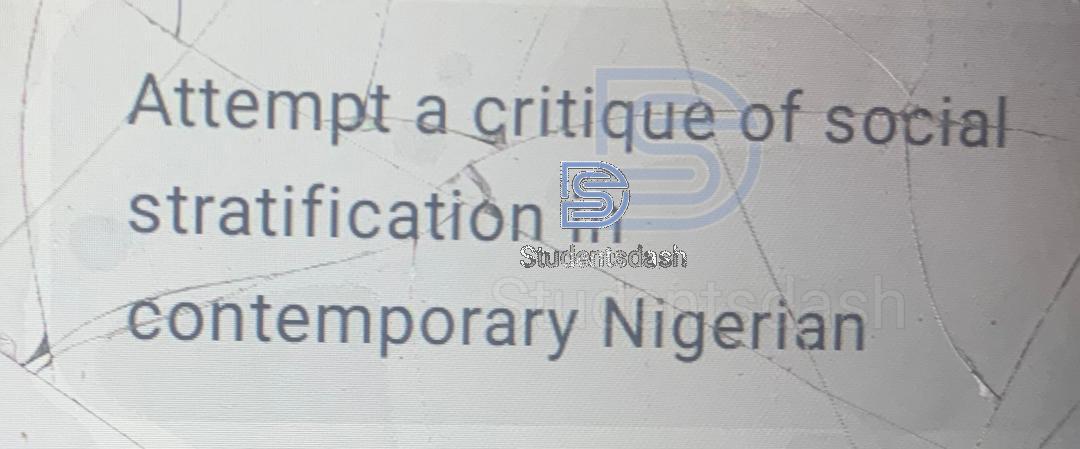EDU 101 Assignment Questions and Answers
Assignment on edu 101.
Account for the establishment of secondary school in Nigeria and enumerate the problem of yaba higher college.
1. Establishment of Secondary Schools in Nigeria
Historical Background and Colonial Influence
- Colonial Beginnings:
Secondary education in Nigeria started during the colonial period when the British introduced Western-style education. The British colonial government, along with Christian missionaries, saw the need to educate Nigerians to help manage the country’s administration. This led to the development of schools that could prepare students for both civil service and leadership roles in society. - Missionary Role:
Missionaries played a key role in setting up early secondary schools. They not only focused on religious teachings but also introduced subjects like English, history, and science. Their goal was to build a knowledgeable class of Nigerians who could help spread modern education and values.
Educational Goals and Social Impact
- Preparing a Skilled Workforce:
The establishment of secondary schools was meant to create an educated workforce. Students trained in these schools were expected to fill important roles in government, business, and eventually in higher education. The schools laid the foundation for intellectual growth and social progress. - Cultural Transformation:
Through the introduction of a Western-style curriculum, these schools also brought changes in Nigerian culture. They promoted new ideas of leadership, critical thinking, and modern science, which gradually reshaped societal values and provided a platform for future national development. - Government Expansion Post-Independence:
After Nigeria gained independence in 1960, there was a strong drive to expand and improve secondary education. This expansion was aimed at making education more accessible to a larger section of the population and at creating a balanced system that could support the country’s economic and social needs.
2. Problems of Yaba Higher College
Yaba Higher College, which eventually evolved into what is known today as Yaba College of Technology, faced several challenges in its early years. Below are the main problems that have been observed and documented:
1. Inadequate Funding
- Limited Financial Resources:
One of the biggest problems was the lack of sufficient government funding. This meant that the college struggled to maintain its facilities, update teaching materials, and afford modern equipment for practical training. Financial constraints also affected the hiring and retention of highly qualified staff.
2. Poor Infrastructure
- Outdated Facilities:
The infrastructure at Yaba Higher College was often not up to the standards needed for technical and higher education. Buildings, laboratories, and classrooms were sometimes old or poorly maintained, which hindered effective learning and research.
3. Curriculum Challenges
- Outdated Curriculum:
The academic programs and training courses were often outdated compared to the rapid development in technical and scientific fields. The slow pace at which the curriculum was updated made it difficult for students to gain contemporary skills that are relevant in a modern work environment.
4. Administrative and Management Issues
- Bureaucracy and Mismanagement:
Problems with administration, including inefficient management practices and bureaucratic delays, affected the overall performance of the institution. These issues often led to poor decision-making regarding academic policies and student services.
5. Shortage of Qualified Staff
- Brain Drain and Retention Issues:
Due to the challenges of poor funding and inadequate working conditions, many qualified teachers and professionals chose to work elsewhere. This shortage of experienced staff further impacted the quality of education and technical training provided at the college.
6. Limited Practical Facilities
- Inadequate Practical Training:
As a technical institution, having access to updated and sufficient practical equipment is essential. The college suffered from a shortage of modern laboratories and equipment, which restricted students from gaining hands-on experience in their areas of study.
Conclusion
In summary, the establishment of secondary schools in Nigeria was driven by colonial and missionary efforts, aiming to create an educated elite and prepare the workforce for future administrative and leadership roles. Over time, this system expanded to serve the needs of an independent nation. On the other hand, Yaba Higher College, despite its historical significance in Nigerian technical education, faced several challenges like insufficient funding, poor infrastructure, outdated curriculum, administrative issues, and a lack of qualified staff and facilities. Understanding these factors helps appreciate both the progress in Nigerian education and the challenges that still need addressing.

